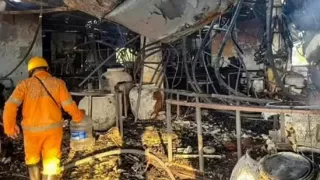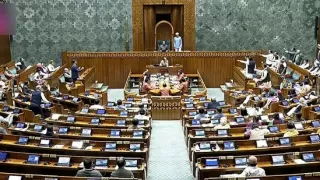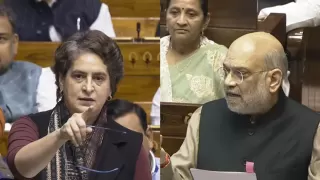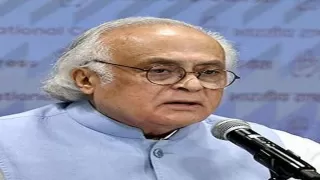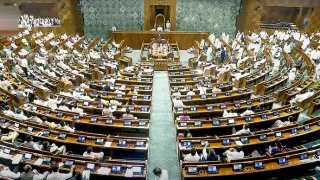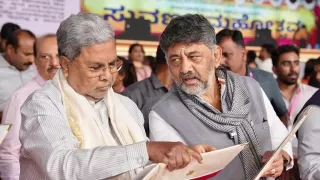The morning air in Patna was charged with anticipation as National Democratic Alliance (NDA) unveiled its landmark manifesto, titled ‘Sankalp Patra 2025’, in the presence of its top leadership—J.P. Nadda, Nitish Kumar and other senior figures. The document promises a sweeping set of reforms and initiatives for the state of Bihar, responding to longstanding challenges of unemployment, migration, and under-development. With elections looming, the alliance has pitched big: 1 crore government jobs, 1 crore "lakhpati didis", 50 lakh pucca houses, and expansive infrastructure schemes.
As the NDA casts its vision for a transformed Bihar, the manifesto is being portrayed as a turning-point offering hope for youth, women, farmers and the industrial sector alike. Yet, the scale of ambition invites scrutiny: how realistic are these pledges, and how much hinges on execution? The electorate will soon pass verdict, but for now, all eyes are on what the Sankalp Patra spells out for the future of Bihar.
Youth and Employment: One Crore Jobs
The NDA manifesto foregrounds employment generation as its centrepiece pledge. It commits to creating **one crore government and allied jobs** in Bihar, aimed at reversing the decades-old trend of out-migration and economic stagnation. A “skills census” is proposed to map youth capabilities, and the document envisages setting up “mega skill-centres” in every district to turn Bihar into a global skilling hub. :contentReference[oaicite:5]{index=5}
Moreover, youth-oriented infrastructure arrives in the form of sports centres, specialised training hubs and a promise of district-level excellence centres. The language signals that employment is not just about filling jobs but creating an ecosystem of opportunities and industries tailored to the local population. :contentReference[oaicite:6]{index=6}
Women Empowerment: One Crore Lakhpati Didis
Another standout promise is transformation of women’s economic status. The NDA pledges to make **one crore women lakhpatis** (women earning at least one lakh annually) and launch initiatives such as “Mission Crorepati” and the Chief Minister’s Women Employment Scheme, which will offer financial assistance up to ₹2 lakh to eligible women entrepreneurs. :contentReference[oaicite:7]{index=7}
By forging pathways for women’s entrepreneurship, the manifesto places women at the heart of Bihar’s economic resurgence. The rhetoric suggests a shift from welfare to empowerment, with women not merely as beneficiaries but as active producers of wealth and change. Yet, realising this ambition will demand systemic support, market linkages, training, and timely credit access in rural and semi-urban Bihar.
Infrastructure & Industry: Expressways, Airports, and Factories
In its bid to reshape Bihar’s physical and economic terrain, the manifesto promises an infrastructure push that spans high-speed corridors, global-scale airports and manufacturing zones. The documents pledge to build **seven expressways**, modernise **3,600 km of rail-track**, establish **four international airports** (in Patna, Darbhanga, Purnia and Bhagalpur) and launch metro services in four cities. :contentReference[oaicite:8]{index=8}
Complementing transport and connectivity is the industrial vision: ten new industrial parks in every district, a defence corridor, a semiconductor manufacturing park and 100 MSME parks. Investment of over ₹1 lakh crore in agri-infrastructure and industrial development is also pledged. These plans aim to anchor growth rather than rely solely on service-sector expansion. :contentReference[oaicite:9]{index=9}
Farmers and Agriculture: Relief & Reform
The manifesto also devotes significant space to agriculture and farmers’ welfare. Among the key promises: guarantee of the Minimum Support Price (MSP) for all crops, a hike in the Karpuri Thakur Kisan Samman Nidhi from ₹6,000 to ₹9,000 annually, and doubling of assistance to fishermen from ₹4,500 to ₹9,000. The state pledges to attract investment of ₹1 lakh crore into agricultural infrastructure. :contentReference[oaicite:10]{index=10}
These moves reflect an attempt to blend supply-side infrastructure like cold-chains and processing with demand-side relief payments. For a state long reliant on small-holder farming and fragmented land-holdings, the manifesto’s strategy is ambitious: modernise agriculture, stem distress migration, and expand rural incomes. The devil, of course, will lie in logistics, implementation and outreach in Bihar’s geographically challenging districts.
Education & Social Justice: From KG to PG
Education and social justice receive prominent treatment. The NDA promises free and quality education from Kindergarten through Post-Graduation for students from poor families, and nutrition-rich meals at school. For SC students, the manifesto pledges residential schools at every subdivision and monthly assistance of ₹2,000 for higher education; for EBCs, assistance up to ₹10 lakh is promised. :contentReference[oaicite:11]{index=11}
These guarantees mark a shift from mere scheme-announcements to framing education as a right and social uplift as a measurable policy. The inclusion of EBC and SC-specific support signals recognition of Bihar’s entrenched social hierarchies and the need to accelerate inclusion if the state’s growth story is to be broad-based rather than polarised.
Housing, Welfare & Quality-of-Life: A New Bihar
The manifesto also articulates plans to reform everyday life for Bihar’s citizens. It pledges to build 50 lakh new pucca houses, offer free ration, supply up to 125 units of free electricity, and provide free medical treatment up to ₹5 lakh. Social security pensions are integrated with the overall welfare programme. :contentReference[oaicite:12]{index=12}
By combining infrastructure, welfare and social protection, the NDA signals that its vision extends beyond job creation and industrialisation to transforming living standards in both urban and rural Bihar. The manifesto casts the “New Bihar” as one where no family is left behind and basic needs meet forward-looking growth ambitions.
Implementation Challenges and Political Stakes
While the ambition in Sankalp Patra is unmistakable, so too are the implementation challenges. Creating one crore jobs, turning one crore women into lakhpatis, building thousands of kilometres of expressway and four international airports—all within the next electoral cycle—will test the capacity of state and allied mission mechanisms. Macro-funding, inter-departmental coordination, private-sector buy-in, and timely delivery will all matter.
Politically, the manifesto is crafted to appeal to multiple constituencies: youth, women, farmers, backward communities, and urban aspirants. With the assembly election scheduled for early November, the document positions the NDA as proactive and futuristic. Yet its viability will be weighed by the electorate not just on paper but in lived realities—jobs delivered, houses built, infrastructure functioning. The next weeks will test how the rhetoric converts into resonance on the ground.
Also Read: Modi Hits Back at Rahul With Bold UNESCO Heritage Pitch





